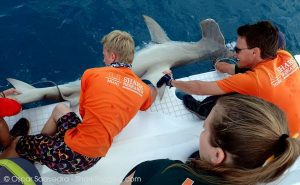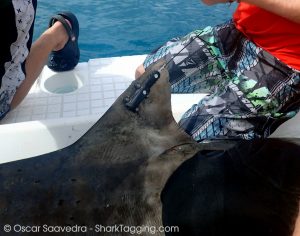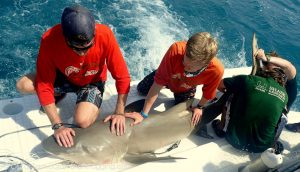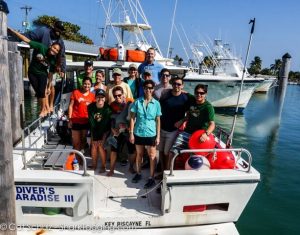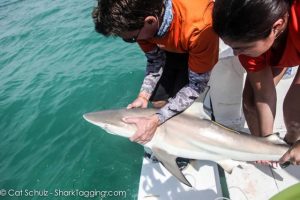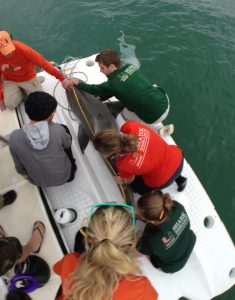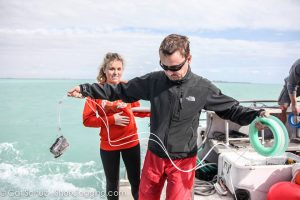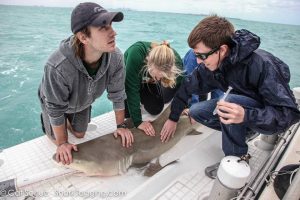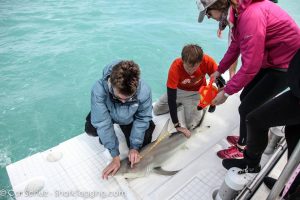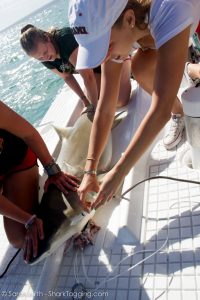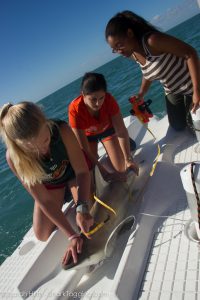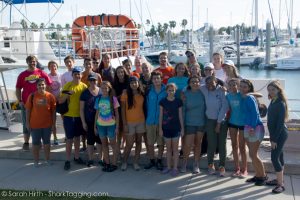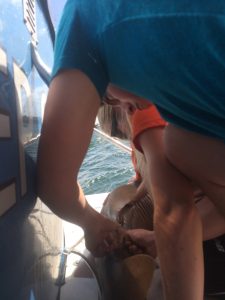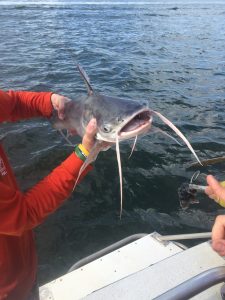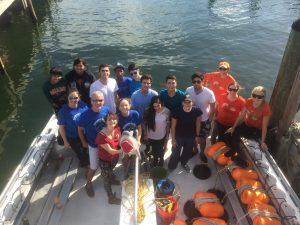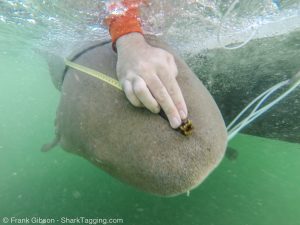Shark Tagging with Maritime Academy
by Jacob Jerome, RJD student
Last Sunday the RJD crew had a VERY exciting and successful day of shark tagging with citizen scientists off the coast of Miami. We left the dock on Key Biscayne early Sunday morning and headed for the waters off Miami Beach. Blessed with calm seas and beautiful weather, we set out our first ten drumlines and waited to see what we were going to get.
After the short one hour soak time, we headed to the first line and started pulling. On just our second line there was tension on the monofilament and we knew that we were in for a great day. As we were pulling in the shark, we heard Captain Eric shout from above “Hammerhead!” With total excitement, everyone got into their places as we brought the shark up to the boat. Knowing that hammerhead sharks are more sensitive, we completed our workup in record time while still being able to attach a satellite tag! With the satellite tag pinging the shark’s location every time it surfaces, we will be able to learn more about where the shark is going and hopefully help to protect the areas that sharks like to hang out. After watching the beautiful shark swim off, we headed to line number three.
With complete dismay, we pulled up the third line to find another great hammerhead! Working even faster, we collected any data that we could and then released our second shark of the day in great condition.
Our luck didn’t end there. Just two lines later, we pulled up a large dusky shark. Nearly everyone on the boat had never seen this species before and we were all very excited to begin our work. After holding down the feisty shark long enough to collect our data, we released the large male in great condition. With three sharks on our first six lines everyone was pumped to see what the rest of the day would bring!
Rounding out our first ten lines we managed to catch two more sharks, a tiger and lemon. A satellite tag was placed on the juvenile tiger shark so we can track where sharks at this age are hanging out. With a busy day so far, we decided to only set out five more drumlines so we could get back to the dock at a reasonable time. Already averaging one shark for every two lines, we were very excited to see what these last five would produce.
Of the five lines we set, four of them had sharks! What was even more incredible was the species diversity and rarity of those sharks. We caught two more great hammerheads, a dusky and nurse shark. While we often sample from powerful nurse sharks, it is rare for us to get hammerheads, let alone four in one day! The dusky sharks that we collected data from were also a rarity for the lab. In the history of the lab we have only collected data from two other dusky sharks. Meaning in one day we doubled our sample size for this species!
It’s safe to say that last Sunday was one of the best trips I’ve ever been on! In just fifteen lines we were able to catch nine sharks of five species. Our team would like to thank the citizen scientists that joined us for their hard work pulling in lines and helping us in our data collection.

